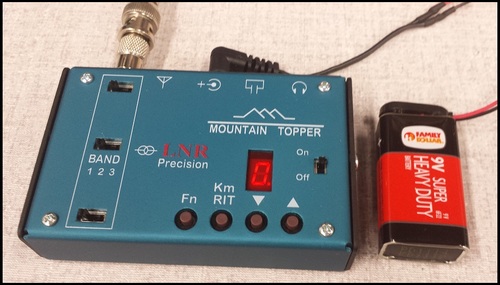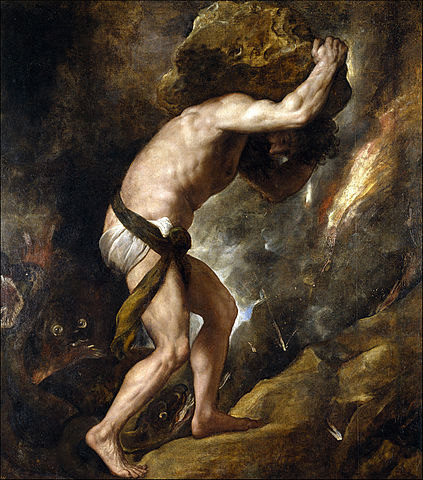CW Brings Certain Advantages to SOTA
You can be a fine SOTA operator using voice modes and you can achieve Mountain Goat or Shack Sloth status using SSB or FM. Shucks, you could succeed using RTTY or JT65 if you were determined, but SOTA has some powerful motivators for learning CW.
Chasers
You can work CW-only activators.
As a chaser, you have all the equipment in your shack at your disposal. The activators have only what they carry. Many activators do not carry a microphone. (Some activators entire go-kit weighs less than 2 pounds!) You aren’t going to work these activators on SSB.
You can work some of them using your computer to recognize/send CW. (CW is just a digital mode which can be digitized by the operator.) Some decoders are pretty good, but when the activator’s signal is too weak for software decoding, you’ll miss out. Signal strength can be an issue, particularly for DX, but some lightweight trail radios send at about 3 watts.
If you’re working toward your Shack Sloth award, you’ll want to be able to work both CW and SSB activations, in order to get your award faster.
Activators and Spotting
One of the coolest pieces of software on Earth is RBNGate. RBNGate is available solely to CW operators. RBNGate will hear you calling CQ and it will post a spot to SOTAWatch on your behalf.
As a reminder, you do not have to be spotted in order to activate a summit. All you have to do to earn your points is to work 4 hams who are not on the hill with you. However, you can get your contacts easier and have the fun of working the pile-up if you get spotted.
RBNGate joins two other mavelous pieces of software – RBN and SOTAWatch. RBN (Reverse Beacon Network) is out there, day in and day out, spotting CW CQs. SOTA chasers are posting spots for SOTA activators to SOTAWatch. SOTA activators post alerts, stating when they intend to activate, to SOTAWatch. What RBNGate does is to take RBN spots, match them up with SOTA alerts, and when they match, it posts a spot to SOTAWatch.
What this means is that all you have to do once you are set up on a summit is to start calling CQ via CW, and about a minute later you have a pile-up.
There are other ways to get spotted.
But with RBNGate, you just sit down, start calling CQ using CW, and you get spotted.
Very cool.
Radios
I love my KX3. The Yaesu FT-817 has many fans. KD1JV’s Mountain Topper (a.k.a. Mountain Top Radio or MTR) series of radios are absolute brilliance. Roughly the size of an Altoid tin (some models are double-size), weighing approximately 1/4 pound, runnable from a single 9-volt battery, they are the paragon of what you want to carry when you’re hiking up the side of a mountain. (i.e. Almost nothing.)
If configured correctly, and your default frequency is free, all you do is plug in your battery, paddle, antenna and earbuds and start calling. Volume level is automatic. Most models don’t even have a power switch. Just plug and call.
Some hams adapt their MTR with a built-in touch paddle, for one less thing to carry and one less thing to plug in.
It only supports CW.
Shortly after I started activating, I bought one of these and put it on a shelf at eye level in my shack, to motivate me to practice CW.

The Usual
As CW fans will tell you, CW gets through when voice can’t:
- When the signal is faint, CW is more likely to get through.
- When you’re operating next to a mountain-top cell tower and QRM is at S8, CW is more likely to get through.
- CW doesn’t have a foreign accent you can’t understand.
- When there’s an SSB contest and the voice frequencies are full, you can move down to CW and find a space to operate.
Crusty old CW operators from back when CW was required in order to get your license sometimes complain that the no-code license spoiled ham radio. SOTA is an example of how the no-code license works well. You get on the air with SSB; you are active with SSB; then you notice advantages of learning CW. Instead of learning it to get your ticket and forgetting it, you learn it because you want to, and you keep using it because it brings you benefits you want.
CW isn’t necessary for SOTA. There are many successful activators and chasers who don’t use it. There are Mountain Goats who got there without a single CW QSO. But CW brings some mighty fine advantages.
Disclaimer: I am not a CW hotshot. I can manage a slow exchange of call signs and RST from a summit… most of the time.
See you on the summits!
73 DE K4KPK / Kevin
Where can I find out more?
- Official site: http://sotadata.org.uk/
- Mailing list: https://groups.yahoo.com/groups/summits
- K4KPK’s site: http://k4kpk.com/content/sota-menu
- Email me (K4KPK). My email address is available via http://www.qrz.com/db/K4KPK.
Bio
K4KPK, Kevin Kleinfelter is Georgia’s first SOTA Mountain Goat. His first QSO (ever) was on a backpacking trip to a 5300’ summit. He has completed more than 140 activations.
This story is Copyright 2015 Kevin P. Kleinfelter. A non-exclusive right to redistribute in electronic or printed form is granted to amateur radio clubs operating in the metro Atlanta area. All other rights reserved.

